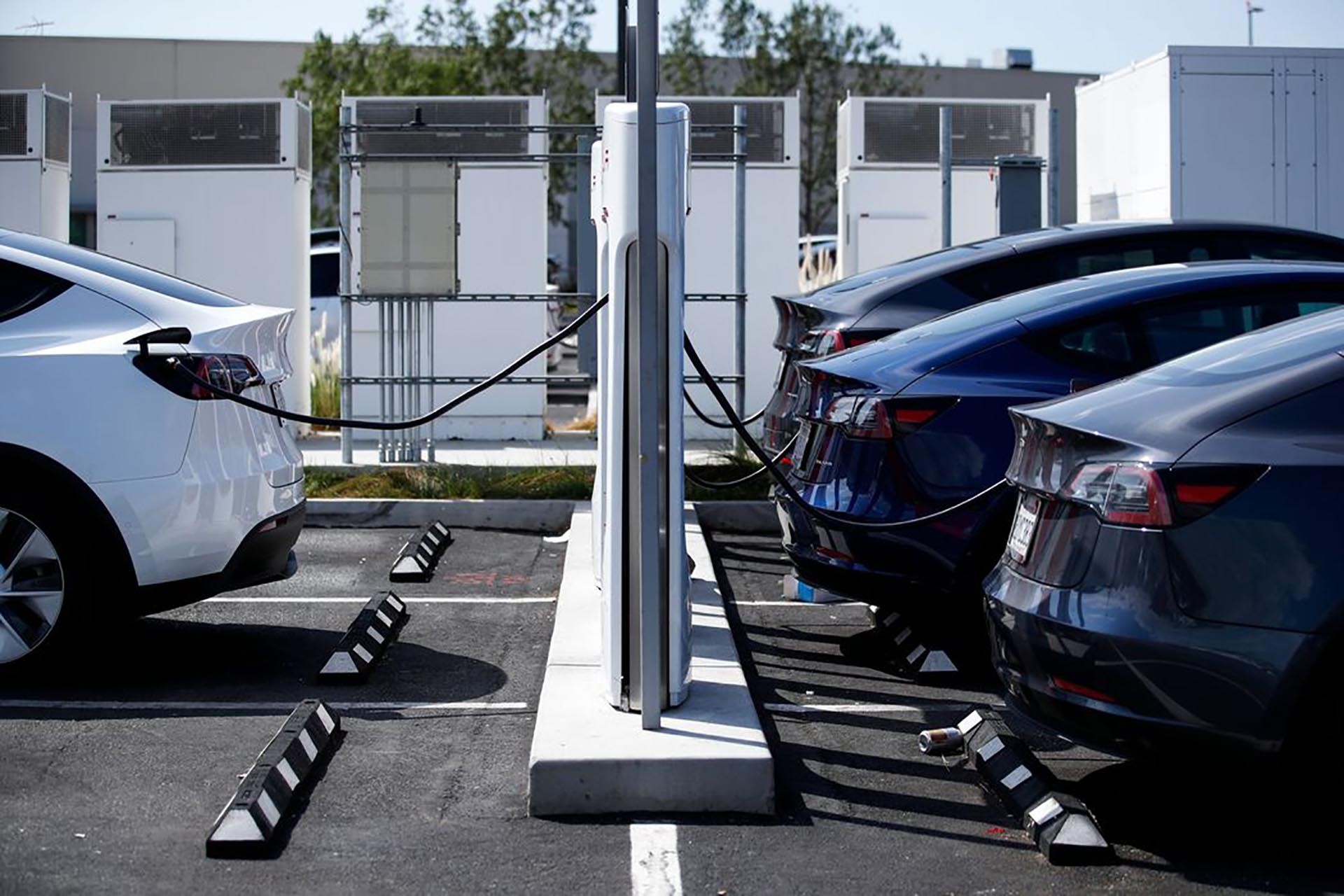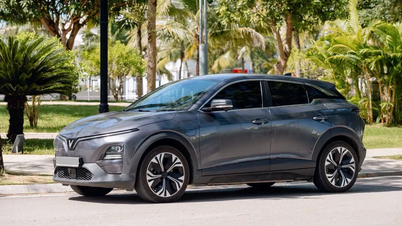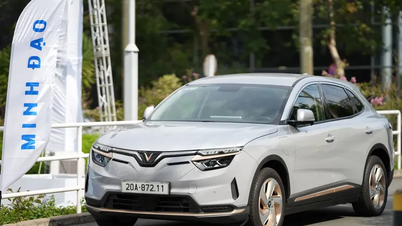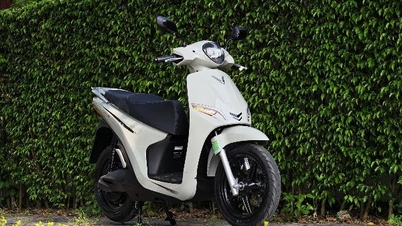 |
| Tesla electric car at a charging station in Hawthorne, California, USA. (Source: Shutter Stock) |
The US government is planning changes to car emissions standards that will force automakers to introduce more electric vehicles. By 2032, electric vehicles are expected to account for about two-thirds of all new cars sold in the US.
Top priority
According to analyst Matthias Heck of the famous credit rating agency Moody's, the targets set by the US Environmental Protection Agency (EPA) are feasible, but will not be easy and will require high investment.
Electric vehicles will become more attractive to consumers over the next decade as battery technology improves, prices fall, and government support policies, such as incentives under the new Deinflation Act, are introduced.
“It’s not going to happen overnight that electric vehicles will flood American roads,” said Chris Harto, a transportation and energy policy analyst at Consumer Reports. Eighty percent of cars on the road in 2032 will still run on gasoline, but when consumers are considering buying a new car, they will consider electric vehicles.
In terms of price, Mr. Harto said electric cars will cost the same or less than gasoline cars. The range of electric cars will be extended due to easy access to fast charging stations and significantly reduced operating costs.
Battery capacity per charge and charging speeds are both expected to increase by about 30% in the next few years. As the charging network improves, electric vehicles will become less of a hard sell for consumers who want a good, affordable vehicle.
2032 will also see more electric vehicles. According to Elizabeth Krear, vice president of electric vehicles at JD Power, the current market share of electric vehicles is 8.5% and she expects that by 2026, that number will increase to 27%.
In California, where electric vehicles are more popular and have more models, the share of electric vehicles in new vehicle sales is expected to reach two-thirds by 2032.
California plans to allow the sale of only fully electric vehicles by 2035, a goal it is on track to achieve, according to Corey Cantor, an analyst at Bloomberg NEF. So electric vehicles are likely to account for more than 80% of new car sales by 2032, and California itself is a key factor in the overall US car market.
Record sales growth
The EU has agreed to ban the sale of petrol and diesel cars from 2035, as part of the 27-nation bloc's efforts to build a carbon-neutral economy by 2050.
According to official figures released by the European Union (EU) in early February 2023, sales of electric vehicles in the EU increased to a record in 2022, in the context of EU countries' efforts to replace vehicles using fossil fuels.
Electric car sales accounted for 12.1% of new car sales, up from 9.1% in 2021 and 1.9% in 2019, the European Automobile Manufacturers Association (ACEA) said.
Traditional petrol and diesel cars continue to lose ground in the EU market, although they will still account for more than half of the region's car sales in 2022, at 52.8%.
2022 is a year of strong growth for hybrid cars in the EU market, with a market share of 22.6%.
Strong sales of electric cars in Germany have contributed to expanding the market share of this product in the EU market.
In Norway, four out of every five new cars sold are electric, an impressive result for a country that aims to end the sale of fossil-fuel cars by 2025.
European automakers are investing 250 billion euros ($272 billion) in electric vehicles, said ACEA president and chief executive of French automaker Renault Luca de Meo.
The auto industry is growing rapidly, but the number of public charging stations has not kept pace.
At present, in EU countries, the speed of station installation is limited to 2,000 stations/week, while 14,000 stations need to be installed weekly to ensure the transition process.
The boom in electric vehicle consumption in Europe can be explained by better supporting infrastructure. In the US, car buyers have more choices and more attractive costs. In Europe, buying an electric car is easier than buying a gasoline car, due to the shift in priorities of suppliers of components and spare parts.
Leading position
Of course, the world’s largest electric vehicle market is China. Over the past two years, annual sales in the world’s most populous country have increased from 1.3 million to a whopping 6.8 million.
China is expected to continue to lead the global electric car market by 2023, far surpassing the US and Europe. According to UBS analyst Paul Gong, electric car sales in China are expected to reach 8.8 million units this year.
The key to China's ability to build and manage a large electric vehicle industry today comes from financial backing and support for electric vehicle battery development from the Chinese government.
For the Southeast Asian market, the question is whether people with relatively low incomes can afford to buy electric cars? Are there enough financial resources to invest in building charging systems?
Compared to European countries, the region's charging infrastructure is still in its early stages, and the high price of electric vehicles is not affordable for the average consumer. Most countries still rely heavily on fossil fuels for electricity generation, so the use of electric vehicles cannot actually reduce carbon emissions.
Source


![[Photo] Dan Mountain Ginseng, a precious gift from nature to Kinh Bac land](/_next/image?url=https%3A%2F%2Fvphoto.vietnam.vn%2Fthumb%2F1200x675%2Fvietnam%2Fresource%2FIMAGE%2F2025%2F11%2F30%2F1764493588163_ndo_br_anh-longform-jpg.webp&w=3840&q=75)








































































































Comment (0)